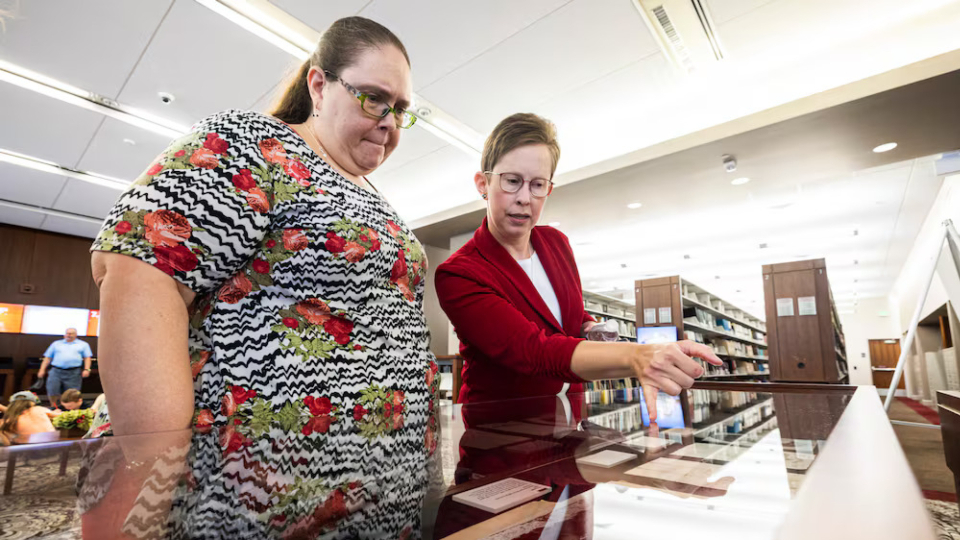
martha-hughes-cannon-1.jpg
Tiffany Bowles, an educator at the Church History Museum, points out different items from Dr. Martha Hughes Cannon’s life to Stacy Mayren, of Kearns, during a celebration of Cannon’s birthday held at the Church History Library in Salt Lake City on Monday, July 1, 2024. Photo by Isaac Hale, courtesy of Church News.Copyright 2024 Deseret News Publishing Company.This story appears here courtesy of TheChurchNews.com. It is not for use by other media.
By Trent Toone, Church News
In 1896, Martha Hughes Cannon, a Democrat, defeated her own husband, a Republican, to become the first female state senator in the United States of America.
“Mattie,” as she was called, was also a physician, trained lecturer, women’s rights advocate and suffragist, a wife, mother and a member of The Church of Jesus Christ of Latter-day Saints.
Cannon’s rich legacy was celebrated on Monday, July 1 — her 167th birthday — at the Church History Library.
Cannon’s story is a “fascinating example of the complex and paradoxical lives of many Utah suffragists,” said Rebekah Clark, historical director for Better Days, a nonprofit dedicated to expanding education about Utah women’s history.
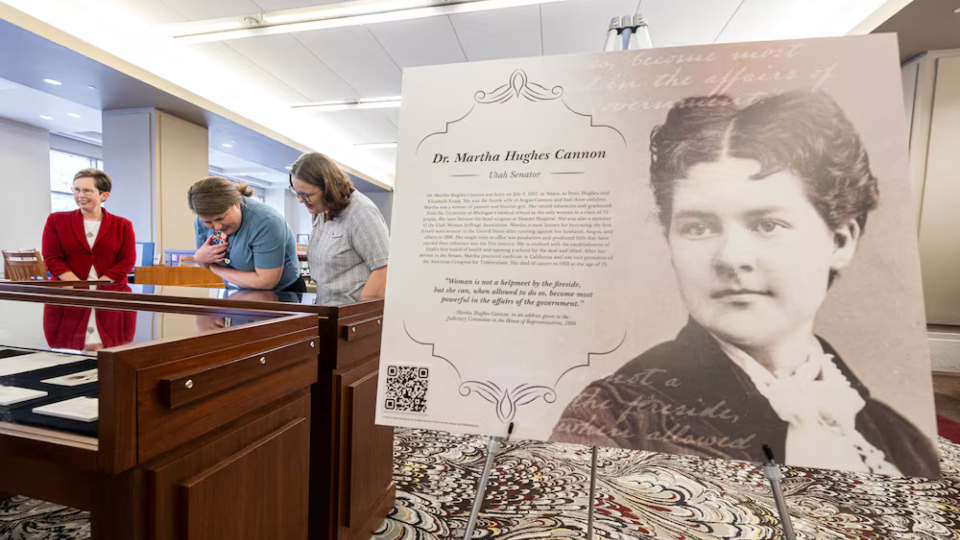
martha-hughes-cannon-2.jpg
Heidi Steed, center, and Gina Strack, right, both with the Utah Division of Archives, look over items from Dr. Martha Hughes Cannon’s life during a celebration of Cannon’s birthday held at the Church History Library in Salt Lake City on Monday, July 1, 2024. Photo by Isaac Hale, courtesy of Church News.Copyright 2024 Deseret News Publishing Company.“Her story has always captivated and inspired me. Over the years, I have grown to love Martha,” Clark said. “She was exceptional in many ways, but she was also representative of the many Utah women who actively worked to secure voting rights and then to use that political voice to help shape the new state and to have an impact for good on their communities. That’s what Utah women have been doing from the start.”
Clark, with Tiffany Bowles, a curator at the Church History Museum and expert on women’s suffrage in Utah, and others gathered at the Church History Library Monday to commemorate Cannon’s birthday and discuss her life and accomplishments.
As part of the event, several historic items were on display, including Cannon’s notebook from medical school at the University of Michigan, personal letters and photographs, one of which shows Cannon and other Utah women’s rights leaders with Susan B. Anthony and Anna Howard Shaw in 1895.
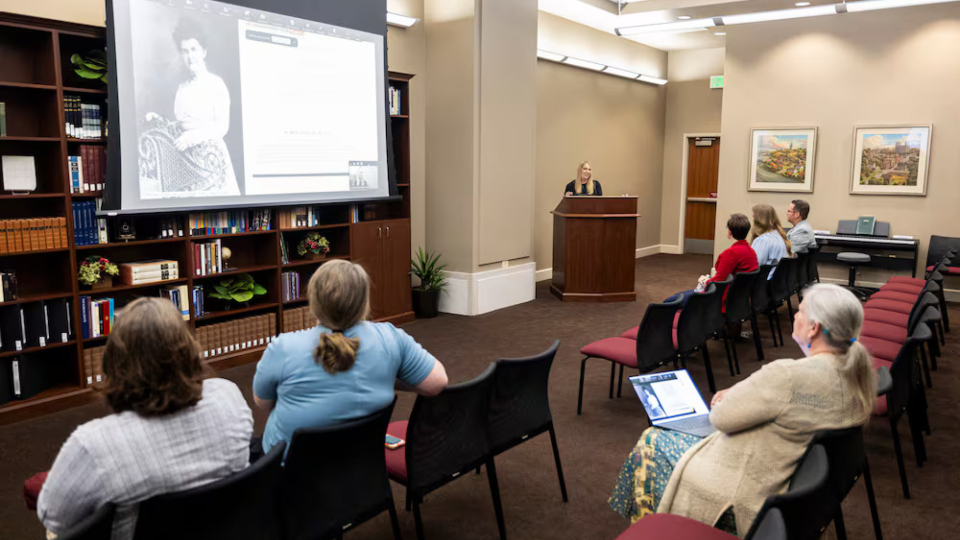
martha-hughes-cannon-3.jpg
Rebekah Clark, historical director of Better Days, speaks during a celebration of Dr. Martha Hughes Cannon’s birthday held at the Church History Library in Salt Lake City on Monday, July 1, 2024. Photo by Isaac Hale, courtesy of Church News.Copyright 2024 Deseret News Publishing Company.Cannon’s Life and Notable Accomplishments
Born on July 1, 1857, in Wales, Cannon’s family joined the Church and emigrated to the Utah Territory.
She lost her father and baby sister at a young age, a hardship that some historians think may have contributed to her interest in medicine.
As a teen, she worked under Emmeline B. Wells as a typesetter for the Deseret News and Women’s Exponent, a women’s newspaper.
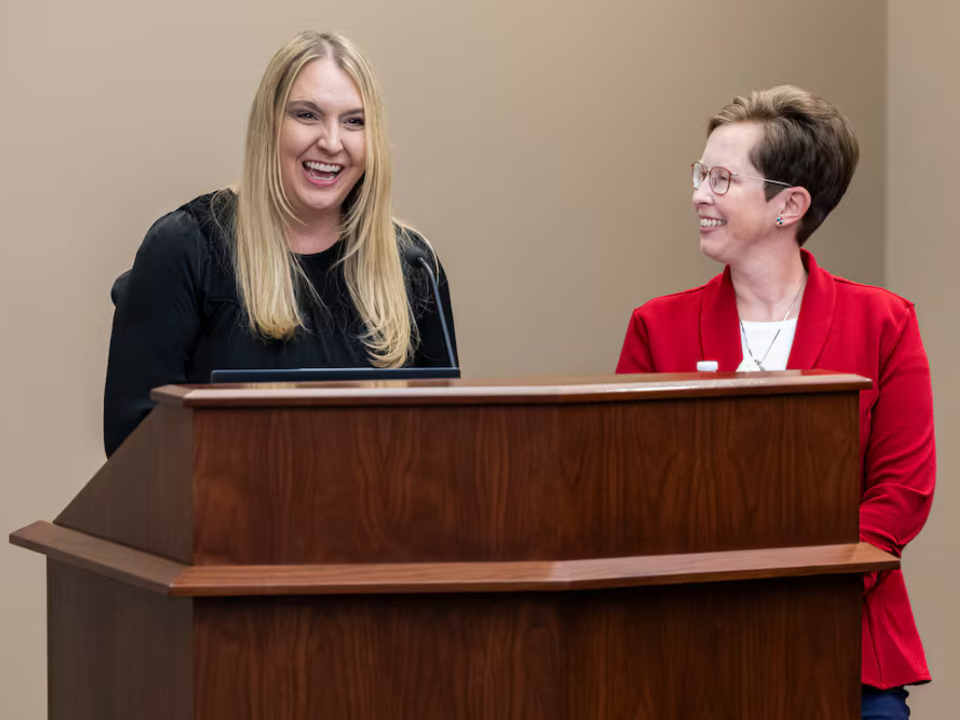
martha-hughes-cannon-4.jpg
Rebekah Clark, left, historical director of Better Days, speaks beside Tiffany Bowles, an educator at the Church History Museum, during a celebration of Dr. Martha Hughes Cannon’s birthday held at the Church History Library in Salt Lake City on Monday, July 1, 2024. Photo by Isaac Hale, courtesy of Church News.Copyright 2024 Deseret News Publishing Company.After finishing a degree in chemistry at the University of Deseret (renamed University of Utah in 1892), Cannon attended medical school at the University of Michigan as the only woman in a class of 75 students. Although forced to sit apart from her male classmates so as not to distract them, she went on to earn a medical degree from the University of Michigan in 1880 and a bachelor’s degree in oratory from the National School of Elocution and Oratory in 1882.
After her schooling, Cannon returned to Utah where she became the youngest head surgeon at Deseret Hospital.
During this time she met Angus Munn Cannon, a hospital board member, who already had three wives and was more than 20 years older than her, and they fell in love and were married in secret in 1884 due to the Edmunds Act of 1882.
Her husband was eventually arrested and Cannon went into hiding, traveling a great distance with their baby, to avoid being forced to testify against him and others. During this discouraging time, she wrote in a letter, “The knowledge that it is God’s plan is the only thing that saves me from despair, almost madness, I fear.”
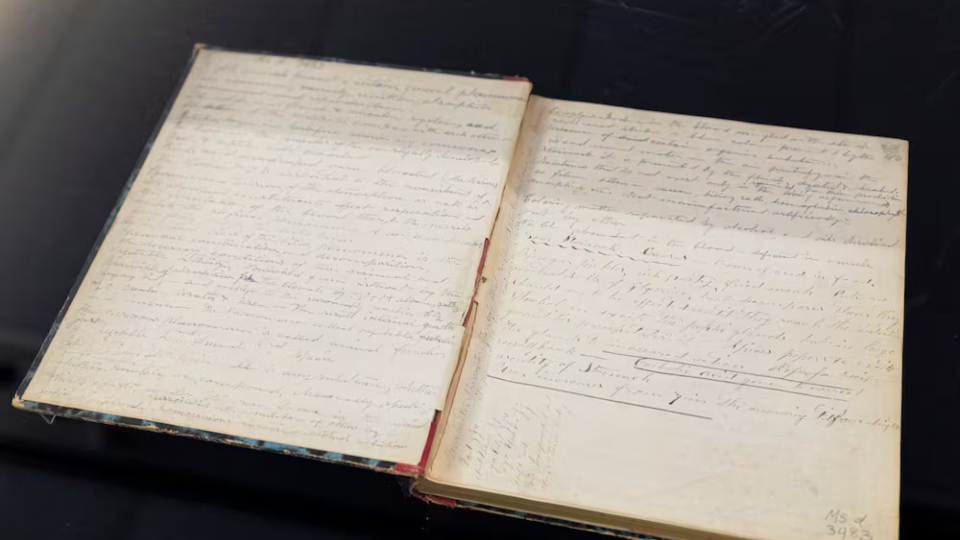
martha-hughes-cannon-5.jpg
A notebook from Dr. Martha Hughes Cannon’s life is displayed during a celebration of Cannon’s birthday held at the Church History Library in Salt Lake City on Monday, July 1, 2024. Photo by Isaac Hale, courtesy of Church News.Copyright 2024 Deseret News Publishing Company.Cannon eventually returned to Utah, opened a nurses training school, and continued her private medical practice. She also became an advocate for women’s rights as an active member of the Utah Women’s Suffrage Association.
She was a featured speaker at the Women’s Congress of the World’s Columbian Exposition of 1893, where the Chicago Record observed: “Mrs. Dr. Martha Hughes Cannon ... is considered one of the brightest exponents of [the] woman’s cause in the United States.”
In 1896, the same year Utah became the 45th state, Cannon engaged in politics and ran against several contenders, including her husband and Wells, and won to become the country’s first female state senator. Her victory gained national attention.
“Martha is best known for how she used her political voice,” Clark said.
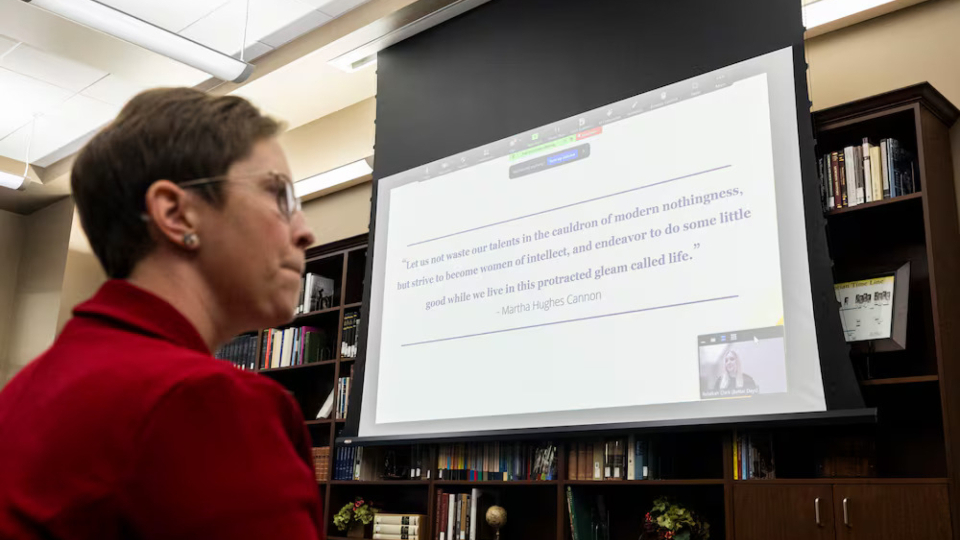
martha-hughes-cannon-6.jpg
Attendees listen to a presentation during a celebration of Dr. Martha Hughes Cannon’s birthday held at the Church History Library in Salt Lake City on Monday, July 1, 2024. Photo by Isaac Hale, courtesy of Church News.Copyright 2024 Deseret News Publishing Company.In the legislature, Martha championed efforts to establish a state board of health. She introduced bills to establish a school for the deaf and blind and to require basic protections for female employees. Her one and only term in office was productive and produced laws that continue to influence Utah in the 21st century.
The Deseret News wrote that “her wit, rapid thinking and knowledge made her capable of holding her own and of representing her sex most favorably.”
Cannon gave birth to a third child in 1899, a controversy that sparked more anti-polygamy opposition. Historians think this may have influenced her decision not to run for a second term.
In 1904, she moved with her children to California, where she worked at the University of California Graves Clinic and served as vice president of the American Congress for Tuberculosis.
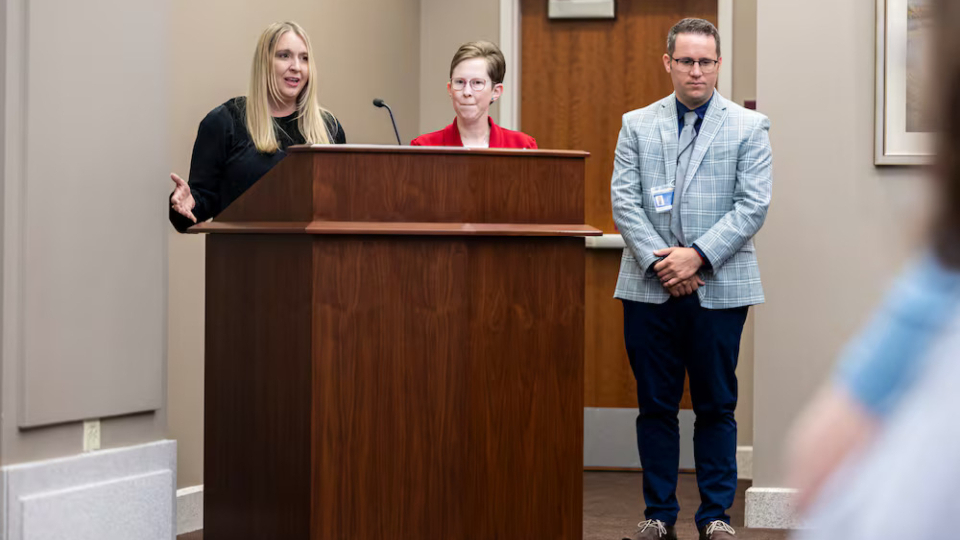
martha-hughes-cannon-7.jpg
Rebekah Clark, left, historical director of Better Days, speaks beside Tiffany Bowles, center, an educator at the Church History Museum, and David Bolingbroke, associate historian with the Church History Department, during a celebration of Dr. Martha Hughes Cannon’s birthday held at the Church History Library in Salt Lake City on Monday, July 1, 2024. Photo by Isaac Hale, courtesy of Church News.Copyright 2024 Deseret News Publishing Company.She died of cancer in 1932 at the age of 75 and is buried in Salt Lake City.
In a letter to a medical school classmate, Cannon wrote: “Let us not waste our talents in the cauldron of modern nothingness, but strive to become women of intellect, and endeavor to do some little good while we live in this protracted gleam called life.”
“This poetic philosophy, her example and her life continue to inspire us today,” Clark said. “Though she stood just shy of five feet, she had an intrepid spirit. She was dynamic, strong-willed, ambitious, intensely faithful, resilient and visionary.”
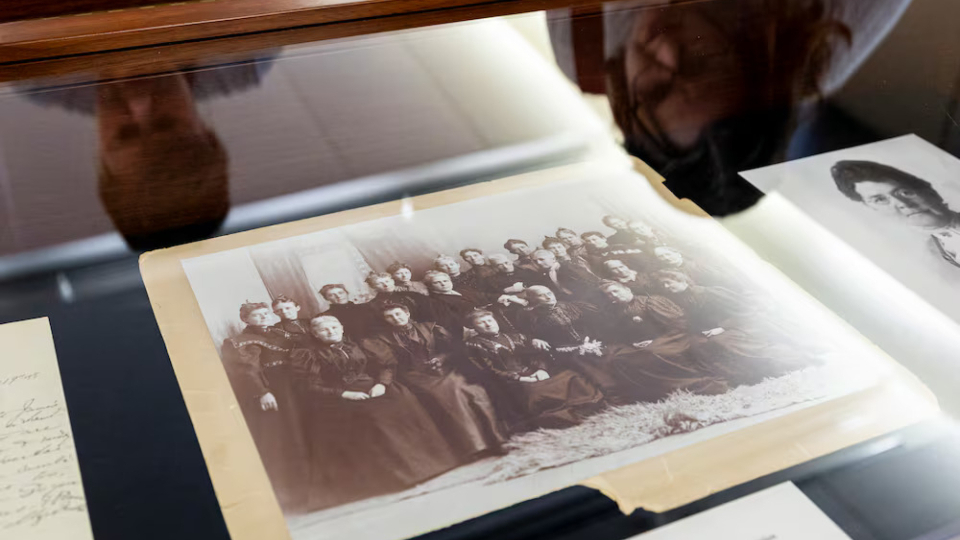
martha-hughes-cannon-8.jpg
A photo from the National American Woman Suffrage Association Convention in 1895 is displayed with other items from Dr. Martha Hughes Cannon’s life during a celebration of Cannon’s birthday held at the Church History Library in Salt Lake City on Monday, July 1, 2024. Photo by Isaac Hale, courtesy of Church News.Copyright 2024 Deseret News Publishing Company.Her Legacy Continues
Cannon’s legacy will continue to live on.
A 7-foot-6-inch statue of Cannon will soon be installed in National Statuary Hall Collection in the U.S. Capitol in Washington, D.C., where it will be one of two statues representing Utah.
“This is an important symbol, not just for Utah, but for the nation,” Clark said.
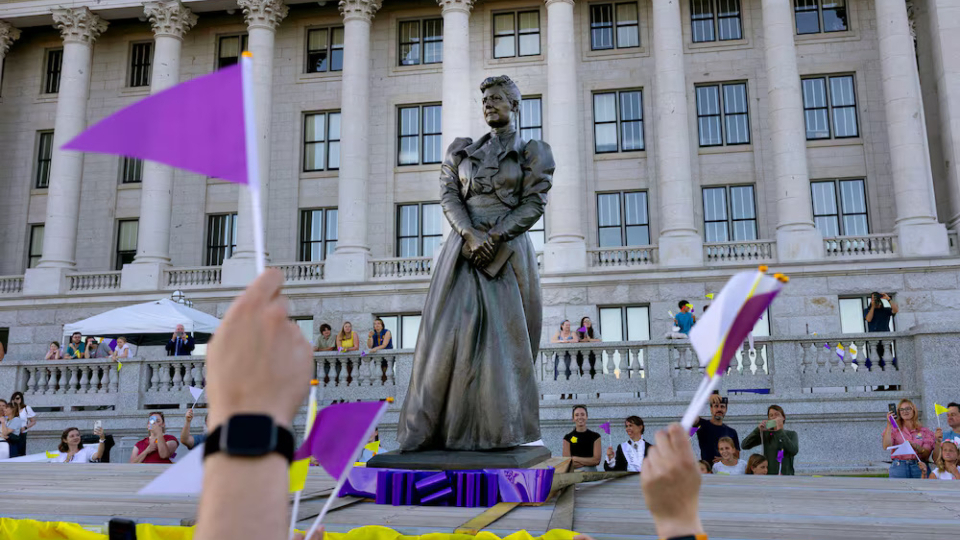
martha-hughes-cannon-9.jpg
People wave goodbye to Utah’s statue of Martha Hughes Cannon as it heads to the U.S. Capitol at the Capitol in Salt Lake City on Wednesday, June 5, 2024. Photo by Laura Seitz, courtesy of Church News.Copyright 2024 Deseret News Publishing Company.Copyright 2024 Deseret News Publishing Company.